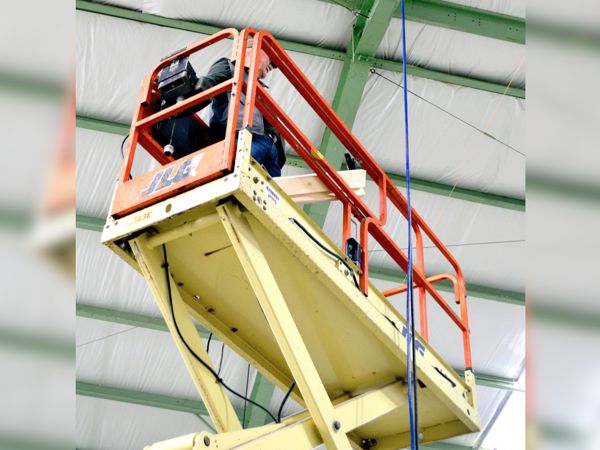Scissor lifts are essential tools that provide a stable and elevated platform for workers to perform tasks at height. These versatile machines are commonly used across various industries, including construction, retail, entertainment, and manufacturing. Unlike aerial work platforms, scissor lifts use a unique "scissors" mechanism — a system of cross beams that move vertically to raise and lower the platform.
Due to their structural similarities to scaffolding, many scissor lifts fall under OSHA’s scaffolding standards. This means operators must follow strict safety protocols to ensure compliance and reduce the risk of accidents.
The main hazards associated with scissor lifts include falls from the platform and tip-overs. While rare, failures in the cross beam structure can occur if maintenance is neglected or if the machine is misused. Following manufacturer guidelines and regular servicing significantly reduces these risks.
Today, some of the most well-known manufacturers of scissor lifts include JLG and Terex's Genie, both of which offer a wide range of models suited for different applications.
A scissor lift functions as a mobile scaffold, allowing workers to reach heights between 25 and 50 feet. The platform size typically ranges from 24 to 36 inches deep and 48 to 72 inches wide, supporting one to four people depending on weight capacity. Each model has specific limitations, so it's crucial to review the specifications before operation.
Most scissor lifts can be controlled either from the base or the platform itself. Some models allow movement while extended, but this feature can be risky. Many manufacturers advise against moving the lift when the platform is raised to prevent accidents.
Source: OSHA
Before operating a scissor lift, it's important to conduct a thorough site assessment to identify potential hazards. Operators should choose the right equipment for the job and implement proper controls for fall protection, stabilization, and positioning. Only trained personnel should operate these machines.
To prevent falls, scissor lifts must be equipped with guardrails around the platform. These rails help secure harnesses and lanyards, providing additional safety. Some models have adjustable rail sections, so extra caution is needed when working near them.
Notes: Falling from a scissor lift can lead to serious injury. Workers should always use a body harness for added protection.
Stability is key when using a scissor lift. Operators should ensure the ground is level and firm. While some models are designed for rough terrain, most require flat surfaces to function safely.
Tip-overs can happen due to uneven ground, collisions with objects, or improper movement while the platform is extended.
Notes: Scissor lifts can tip over if struck at the base or if they collide with an object while extended.
Proper positioning is vital to prevent crushing and electrocution hazards. Operators must be aware of nearby obstacles and electrical lines. If the lift comes into contact with power lines, even without direct touch, there is a risk of electrocution.
Arc flash risks also exist, where electricity can jump from a power line to the lift or worker. This makes it critical to maintain a safe distance from all electrical sources.
Notes: Always be cautious when raising or lowering the platform, and avoid sudden movements while on the ground.
#material handling
#construction
#toolbox talks
#scissor lifts
Tungstic acid can exist in various states, mostly yellow powder or crystal. Soluble in hydrofluoric acid, slowly soluble in caustic alkali solution, insoluble in water and other acids. Tungstic Acid,Tungstic Acid Powder,Industrial Tungstic Acid,High-Purity Tungstic Acid Jiangsu Lucky Metal Materials Co., Ltd. , https://www.luckymetalmoly.com
Scissor Lift Design
Notes: Scissor lifts get their name from the crossed beams that resemble scissors, which enable vertical movement.
General Safety Measures
Fall Protection
Stabilization
Positioning
Group Discussion Topics
Find Similar Articles By Topic
General formula mWO3 · nH2O. There are many kinds of known tungstic acid, all of which are polymer compounds formed by combining tungsten trioxide WO3 with water in different ratios and forms. Known tungstic acid includes yellow tungstic acid, leucic acid, metatungstic acid, etc.